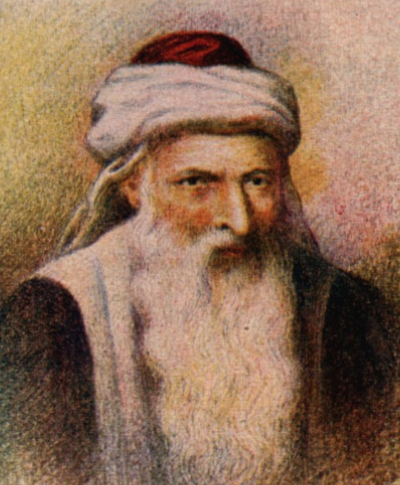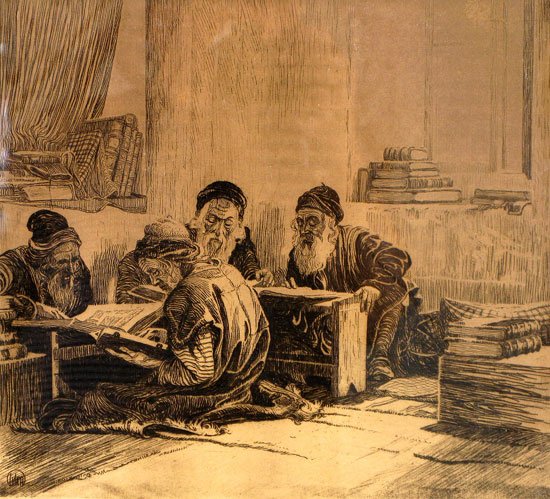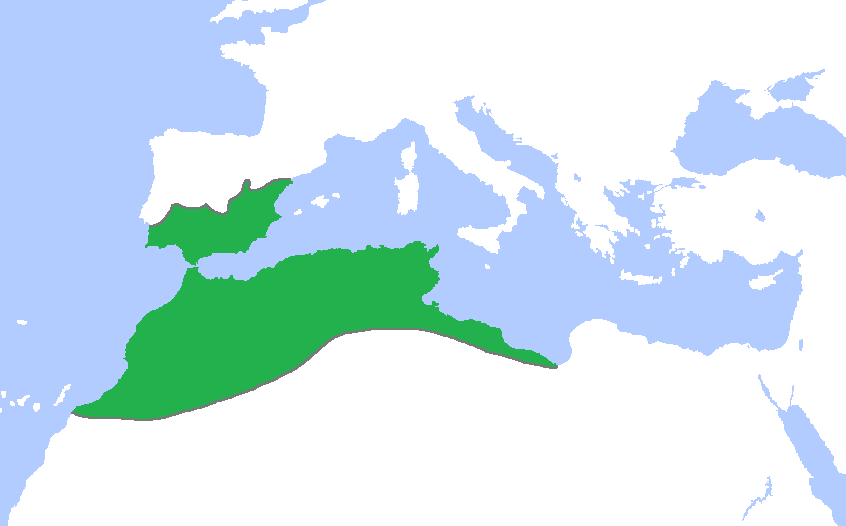|
Kitzur Shulchan Aruch
The ''Kitzur Shulchan Aruch'' () is a work of halacha written by Rabbi Shlomo Ganzfried which summarizes the ''Shulchan Aruch'', mainly the sections "Orach Chayim" and " Yoreh De'ah", and deals with daily laws, prayers, Shabbat and holiday laws, etc. The work was written in simple Hebrew which made it easy for the layperson to understand and contributed to its popularity. Contents The work is a summary, or ''kitzur,'' of the sixteenth-century Shulchan Aruch of Rabbi Joseph Caro, with references to later rabbinical commentaries. It focuses on the Orach Chaim and Yoreh Deah sections of the Shulchan Aruch, and includes laws of daily life, Shabbat, holidays and so on. It is divided into 221 chapters (called ''simanim''). As this work was written for the laity, it is not as detailed as the Shulchan Aruch itself, while generally following the Shulchan Aruch's structure. Rabbi Ganzfried expressed his intentions in his introduction: Ganzfried based his decisions on the opinions ... [...More Info...] [...Related Items...] OR: [Wikipedia] [Google] [Baidu] |
Shlomo Ganzfried
Shlomo Ganzfried (or ''Salomon ben Joseph Ganzfried''; 1804 in Ungvár – 30 July 1886 in Ungvár) was an Orthodox rabbi and posek best known as the author of the work of Halakha (Jewish law), the ''Kitzur Shulchan Aruch'' (Hebrew: קיצור שולחן ערוך, "The Abbreviated Shulchan Aruch"), by which title he is also known. Biography Ganzfried was born in 1804 in Ungvár, in the Ung County of the Kingdom of Hungary (present-day Ukraine). His father Joseph died when he was eight. Ganzfried was considered to be a child prodigy and Ungvár's chief rabbi and Rosh yeshiva, Rabbi Zvi Hirsh Heller assumed legal guardianship; Heller was known as "''Hershele'' the Sharp-witted" for his piercing insights into the Talmud. Heller later moved to the city of Bonyhád, and Ganzfried, then fifteen, followed him. He remained in Heller's yeshiva for almost a decade until his ordination and marriage. After his marriage he worked briefly as a wine merchant. In 1830, he aband ... [...More Info...] [...Related Items...] OR: [Wikipedia] [Google] [Baidu] |
Yaakov Lorberbaum
Yaakov ben Yaakov Moshe Lorberbaum of Lissa (1760-1832) (known in English as Jacob ben Jacob Moses of Lissa, Jacob Lorberbaum or Jacob Lisser, Hebrew: יעקב בן יעקב משה מליסא) was a rabbi and posek. He is most commonly known as the "Ba'al HaChavas Da'as" or "Ba'al HaNesivos" for his most well-known works, or as the " Lissa Rav" for the city in which he was Chief Rabbi. Biography Lorberbaum was the great-grandson of the Chacham Tzvi, Rabbi Zvi Ashkenazi. According to one tradition, his father, Rabbi Yaakov Moshe, died before he was born, and his relative, Rabbi Yosef Teomim, the rabbi of Bursztyn, brought him up. This accounts for the common name that both father and son share. Another tradition states that before he was born, his father fell ill, and dreamed that he would recover in the merit of the son that would be born to him. In the merit of his future son, the father took his name-to-be. Yet another legend told is that at his naming ceremony his father was pre ... [...More Info...] [...Related Items...] OR: [Wikipedia] [Google] [Baidu] |
Achronim
In Jewish law and history, ''Acharonim'' (; he, אחרונים ''Aḥaronim''; sing. , ''Aḥaron''; lit. "last ones") are the leading rabbis and poskim (Jewish legal decisors) living from roughly the 16th century to the present, and more specifically since the writing of the ''Shulchan Aruch'' (Hebrew: , "Set Table", a code of Jewish law) in 1563 CE. The ''Acharonim'' follow the ''Rishonim'', the "first ones"—the rabbinic scholars between the 11th and the 16th century following the ''Geonim'' and preceding the ''Shulchan Aruch''. The publication of the ''Shulchan Aruch'' thus marks the transition from the era of Rishonim to that of Acharonim. Consequences for Halakhic change The distinction between the ''Acharonim'', ''Rishonim'' and ''Geonim'' is meaningful historically. According to the widely held view in Orthodox Judaism, the Acharonim generally cannot dispute the rulings of rabbis of previous eras unless they find support from other rabbis in previous eras. Yet the oppo ... [...More Info...] [...Related Items...] OR: [Wikipedia] [Google] [Baidu] |
Ben Ish Hai
Yosef Hayim (1 September 1835 – 30 August 1909) ( Iraqi Hebrew: Yoseph Ḥayyim; he, יוסף חיים מבגדאד) was a leading Baghdadi ''hakham'' (Sephardi rabbi), authority on ''halakha'' (Jewish law), and Master Kabbalist. He is best known as author of the work on ''halakha'' ''Ben Ish Ḥai'' () ("Son of Man (who) Lives"), a collection of the laws of everyday life interspersed with mystical insights and customs, addressed to the masses and arranged by the weekly Torah portion. Biography Hayim initially studied in his father's library, and, at the age of 10, he left ''midrash'' ("school room") and began to study with his uncle, David Hai Ben Meir, who later founded the Shoshanim LeDavid Yeshiva in Jerusalem. In 1851, he married Rachel, the niece of Abdallah Somekh, his prime mentor, with whom he had a daughter and two sons. When Hayim was only twenty-five years old, his father died. Despite his youth, the Jews of Baghdad accepted him to fill his father's place as ... [...More Info...] [...Related Items...] OR: [Wikipedia] [Google] [Baidu] |
Rabbinic Judaism
Rabbinic Judaism ( he, יהדות רבנית, Yahadut Rabanit), also called Rabbinism, Rabbinicism, or Judaism espoused by the Rabbanites, has been the mainstream form of Judaism since the 6th century CE, after the codification of the Babylonian Talmud. Rabbinic Judaism has its roots in Pharisaic Judaism and is based on the belief that Moses at Mount Sinai received both the Written Torah (''Torah she-be-Khetav'') and the Oral Torah (''Torah she-be-al Peh'') from God. The Oral Torah, transmitted orally, explains the Written Torah. At first, it was forbidden to write down the Oral Torah because the rabbis feared that it would become rigid and lose its flexibility, but after the destruction of the Second Temple they decided to write it down in the Talmud and other rabbinic texts. Rabbinic Judaism contrasts with the Sadducees, Karaite Judaism and Samaritanism, which do not recognize the Oral Torah as a divine authority nor the rabbinic procedures used to interpret Jewish scri ... [...More Info...] [...Related Items...] OR: [Wikipedia] [Google] [Baidu] |
Michael Broyde
use both this parameter and , birth_date to display the person's date of birth, date of death, and age at death) --> , death_place = , death_cause = , body_discovered = , resting_place = , resting_place_coordinates = , burial_place = , burial_coordinates = , monuments = , nationality = , other_names = , citizenship = United States , education = , alma_mater = New York University Law School (J.D.) , occupation = , years_active = , era = , employer = Emory University School of Law , organization = , agent = , known_for = , notable_works = , style = , height = , television = , title = Professor of law and the Academic Director of the Law and Religion Program , term = , predecessor = , successor = , party = , mo ... [...More Info...] [...Related Items...] OR: [Wikipedia] [Google] [Baidu] |
History Of The Jews In Hungary
The history of the Jews in Hungary dates back to at least the Kingdom of Hungary, with some records even predating the Hungarian conquest of the Carpathian Basin in 895 CE by over 600 years. Written sources prove that Jewish communities lived in the medieval Kingdom of Hungary and it is even assumed that several sections of the heterogeneous Hungarian tribes practiced Judaism. Jewish officials served the king during the early 13th century reign of Andrew II. From the second part of the 13th century, the general religious tolerance decreased and Hungary's policies became similar to the treatment of the Jewish population in Western Europe. The Jews of Hungary were fairly well integrated into Hungarian society by the time of the First World War. By the early 20th century, the community had grown to constitute 5% of Hungary's total population and 23% of the population of the capital, Budapest. Jews became prominent in science, the arts and business. By 1941, over 17% of Budapest' ... [...More Info...] [...Related Items...] OR: [Wikipedia] [Google] [Baidu] |
Asher Ben Yechiel
Asher ben Jehiel ( he, אשר בן יחיאל, or Asher ben Yechiel, sometimes Asheri) (1250 or 1259 – 1327) was an eminent rabbi and Talmudist best known for his abstract of Talmudic law. He is often referred to as Rabbenu Asher, “our Rabbi Asher” or by the Hebrew acronym for this title, the Rosh (, literally "Head"). His yahrzeit is on 9 Cheshvan. Biography The Rosh was probably born in Cologne, Holy Roman Empire, and died in Toledo. His family was prominent for learning and piety, his father Yechiel was a Talmudist, and one of his ancestors was Rabbi Eliezer ben Nathan (the ''RaABaN''). Asher had eight sons, the most prominent of whom were Jacob (author of the '' Arba'ah Turim'') and Judah. In 1286, King Rudolf I had instituted a new persecution of the Jews, and the great teacher of the Rosh, Rabbi Meir of Rothenburg, left Germany but was captured and imprisoned. The Rosh raised a ransom for his release, but Rabbi Meir refused it, for fear of encouraging the i ... [...More Info...] [...Related Items...] OR: [Wikipedia] [Google] [Baidu] |
Maimonides
Musa ibn Maimon (1138–1204), commonly known as Maimonides (); la, Moses Maimonides and also referred to by the acronym Rambam ( he, רמב״ם), was a Sephardic Jewish philosopher who became one of the most prolific and influential Torah scholars of the Middle Ages. In his time, he was also a preeminent astronomer and physician, serving as the personal physician of Saladin. Born in Córdoba, Almoravid Empire (present-day Spain), on Passover eve, 1138 (or 1135), he worked as a rabbi, physician and philosopher in Morocco and Egypt. He died in Egypt on 12 December 1204, when his body was taken to the lower Galilee and buried in Tiberias. During his lifetime, most Jews greeted Maimonides' writings on Jewish law and ethics with acclaim and gratitude, even as far away as Iraq and Yemen. Yet, while Maimonides rose to become the revered head of the Jewish community in Egypt, his writings also had vociferous critics, particularly in Spain. Nonetheless, he was posthumously ... [...More Info...] [...Related Items...] OR: [Wikipedia] [Google] [Baidu] |
Isaac Alfasi
Isaac ben Jacob Alfasi ha-Cohen (1013–1103) ( ar, إسحاق الفاسي, he, ר' יצחק אלפסי) - also known as the Alfasi or by his Hebrew acronym Rif (Rabbi Isaac al-Fasi), was a Maghrebi Talmudist and posek (decider in matters of halakha - Jewish law). He is best known for his work of ''halakha'', the legal code Sefer Ha-halachot, considered the first fundamental work in ''halakhic'' literature. His name "Alfasi" means "of Fez" in Arabic, but opinions differ as to whether he ever lived in Fez. Biography He was born in Qalaat Hammad, which is understood by most historians of the past 100 years to be Qalaat Beni Hammad in modern-day Algeria, capital city of the Hammadid rulers of central Maghreb.Leonard Levy, ''R. Yitzhaq Alfasi's application of principles of adjudication in Halakhot Rabbati'', footnotes 11-27 However, older sources believe Qalaat Hammad refers to a village near Fez. In the former case, Alfasi's name would indicate that his family had ancestry in F ... [...More Info...] [...Related Items...] OR: [Wikipedia] [Google] [Baidu] |
Chochmat Adam
Avraham Danzig (ben Yehiel Michael, 1748—1820; אברהם דנציג) was a rabbi, ''posek'' (legal decisor) and codifier, best known as the author of the works of Jewish law called ''Chayei Adam'' and ''Chochmat Adam''. He is sometimes referred to as "the ''Chayei Adam''". Biography Danzig was born in Danzig (Gdańsk), Poland (hence his name), in 1747 or 1748 into a prominent rabbinic family. When he was fourteen, his father sent him to study at the Prague ''yeshivah'', after exacting a promise from him "that he would not mingle with the Moderns" who were then gradually coming into prominence through the influence of Moses Mendelssohn. He studied in Prague for four years under Rabbi Yechezkel Landau and Rabbi Joseph Liebermann. He was then offered a position as rabbi in Vilna, but declined, earning his livelihood as a merchant (frequenting the fairs of Leipzig and Königsberg - which are referred to in his writings). Only in his later years, and after having lost almost his en ... [...More Info...] [...Related Items...] OR: [Wikipedia] [Google] [Baidu] |
Chayei Adam
Chayei Adam (חיי אדם "The Life of Man") is a work of Jewish law by Rabbi Avraham Danzig (1748–1820), dealing with the laws discussed in the Orach Chayim section of the Shulchan Aruch. It is divided into 224 sections - 69 dealing with daily conduct and prayer, and 155 with Shabbos (Sabbath) and Yom Tov (holidays). Chayei Adam was intended primarily "for the cultured layman", as opposed to rabbinic scholars, and the work is thus presented in a readily accessible form. In many cities, societies were formed for the purpose of studying Chayei Adam. In this work, Rabbi Danzig collected and critically sifted the '' Acharonic'' material in the field of the Halakha written in the more than two and a half centuries since the appearance of the Shulchan Aruch. A parallel work ''Nishmas Adam'', published together with Chayei Adam, discusses the halachic issues in greater depth. The two are usually printed together. The scholarship of the work is evidenced by the fact that Rabbi Chaim ... [...More Info...] [...Related Items...] OR: [Wikipedia] [Google] [Baidu] |




